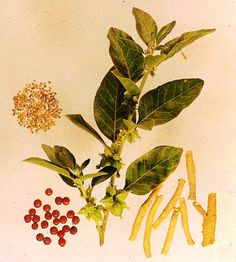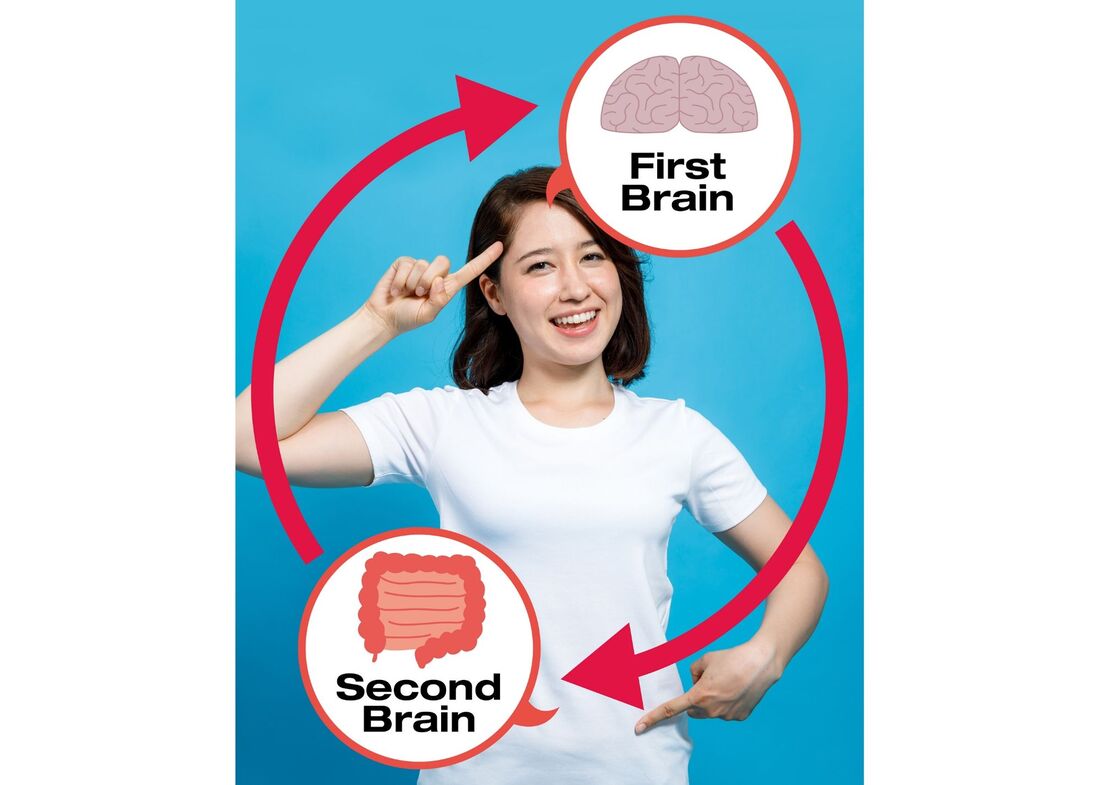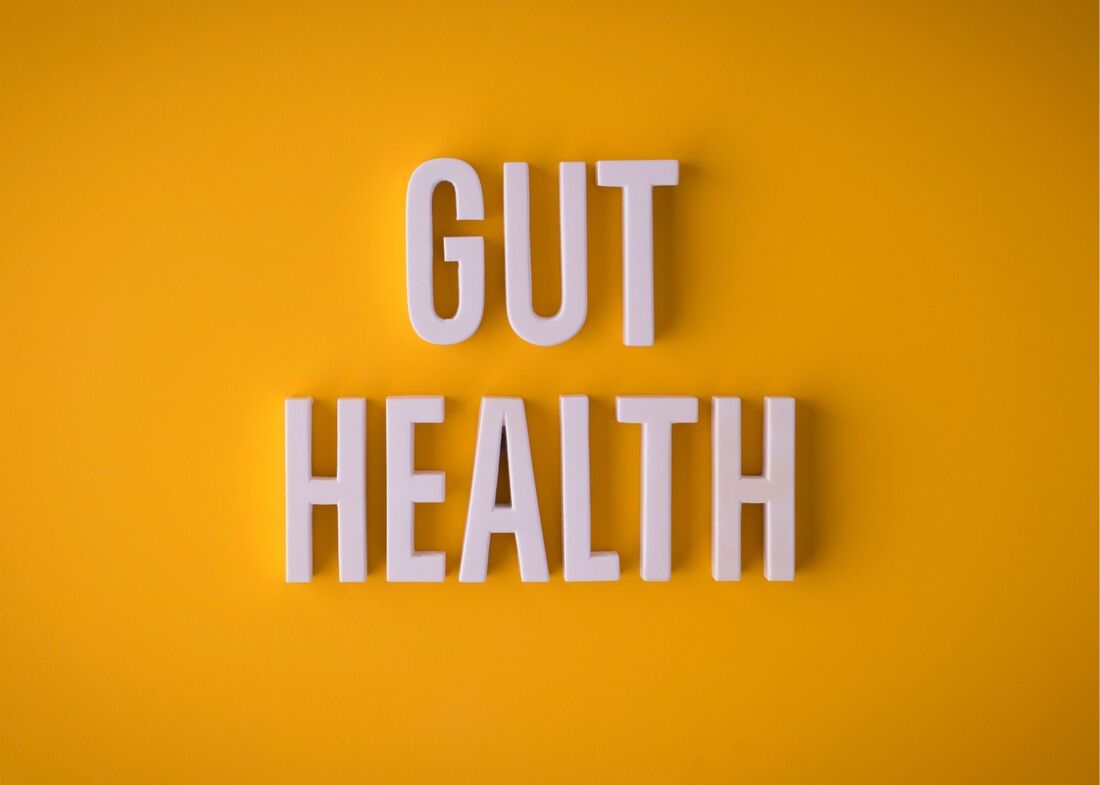|
The name Ashwaganda comes from the Sanskrit “ashva” meaning horse, and “gandha”, meaning smell, and refers to the odor of the root. It is an herb traditional to Ayurvedic medicine and has been used for over 4,000 years. It is specific for both men and women in regard to issues with fertility, stress, and general chronic disorders of the nervous system. It is classified in Ayurveda as a rasayana, one of a group of elite herbal medicines reputed to promote physical and mental health, to augment resistance of the body against disease and diverse adverse environmental factors, to revitalize and increase longevity. As with any form of herbal medicine, the below information is not meant to replace medical advice or prescriptions from your MD. All information below is based off of Materia Medica texts and comes from published and historical sources. Family: Solanaceae Parts Used: Dried Root and Leaves (for Withaferin A in cancer therapies) Other Common Names: Indian Ginseng, Winter Cherry, Avarada, Turangi-gandha Actions: General Tonic Rejuvenating Aphrodesiac Astringent Sedative Adaptogenic Anti-Inflammatory Immune Modulating Anti-Anemic Anti-Depressant Anxiolytic, possibly due to GABA-mimetic activity Antioxidant Nervous System Tonic Anti-Stress Anti-Tumor Oxytocic Hemopoietic Cardiopulmonary action Tonic to the Central Nervous System Cardiotropic Cardioprotective Anticoagulant Chemical Constituents: Steroidal lactones
What are its Uses?Head, Ears, Eyes, Nose, and Throat:
Integumentary System (Skin):
Mind/Mental Health:
Nervous System:
Respiratory System:
Digestive System:
Urinary/Renal System:
Endocrine System (Hormones):
Cardiovascular System:
Circulatory System:
Immune/Lymphatic System:
Reproductive System:
Musculoskeletal System:
Specific Diseases/States/Infections/Viruses/Bacteria:
Herbal Combinations
Clinical Studies
Safety Concerns/Contraindications
I hope you've enjoyed this article on the many uses of this incredibly ancient and reliable herbal ally. If you have any questions about this herb or its uses, or would like to contact me about other related herb/health concerns, please feel free to reach out to me directly via email by clicking here. In health and wellness, - Petra References
7 Comments
Have you ever experienced that moment where you have some sort of deadline and you find yourself running out the door, in a mad dash, to make it on time? Noticing that both your mind and stomach are a bundle of nerves? Then all of a sudden you are forced to make an abrupt detour to the bathroom because your stomach has failed you? Or perhaps you can recall a moment when you have eaten something that has upset your body causing bloating and gas? This feeling then morphs into other ailments, creating a whole cascade of negative reactions.
Now you observe that you have a headache and you are experiencing that brain fog where your mind feels as though it is all over the place. Perhaps you have experienced a moment where your “gut” speaks up, providing you with an intuitive feeling to avoid a specific road or to not trust a particular person? Have you stopped to ask yourself why this is happening? Well, my friend, you are not alone. The gut-brain axis is a bidirectional circuitry that runs from your central nervous system (brain and spinal cord) to your enteric nervous system (a division of the autonomic nervous system that governs the gastrointestinal tract). The gut-brain axis is a powerful mechanism that governs how you feel emotionally and physically making it our “second” brain. Let’s break it down, shall we? Our brain is constantly sending or receiving messages whether it is in response to the external environment or sensing and responding to the happenings within the internal body. Breaking it down further, what governs these feelings are the bacteria inside of the gut. What! Bacteria!? Don’t worry, I was shocked too, especially to learn that these bacteria are often the “good guys” if taken care of properly. The bacteria within our body are responsible for manufacturing nutrients, breaking down food, and when balanced helps to neutralize toxins. The gut-brain axis aids in the creation of our neurotransmitters, which are chemicals that can make us feel happy or sad. One neurotransmitter, in particular, called serotonin, regulates our mood, digestion, and appetite. Although this neurotransmitter is often known for its role in the brain, scientists are finding that the vast majority, roughly 90%, are made in the gut. With the gut holding that much power it will not be surprising to learn that about 80% of the immune system is also located in the gut. What does this mean? It means that how one chooses to fuel their body will influence the microbiome thus impacting how one feels. Food can either encourage the body to repair and heal itself by providing the right building blocks and tools, or it can be destructive adding more stress in the body further breaking it down. The HPA axis (hypothalamic-pituitary-adrenal axis) is the center for stress response. Daily, our body is combating environmental, social, financial, emotional, physical, stressors that degrade and wear down the body. The immune system is responsible for fighting pathogens and microbes (the bad guys), where the nervous system is responsible for how the body communicates. So how is it our food choices play into these systems? Well, its time to connect the dots! Once the food is ingested, the process of digestion begins, once the food particles make their way into the small intestine, it is broken down into its smallest molecular form so that it can be assimilated and used throughout the body. At this point, bacteria and the immune system are doing their jobs by protecting the body. However, if the foods that are eaten are inflammatory by nature this will result in the system going out of balance. Unfortunately, this causes the body to work overtime. If the same inflammatory foods are repeatedly eaten, it causes the HPA axis to be on high alert, in turn overburdening the immune system. This also offsets the microbiome of the gut, allowing the “bad bacteria” to dominate offsetting the good bacteria. As you can see, food choices can create a snowball effect, impacting our bacteria which influences of physical symptoms (gas, bloating) and our mental symptoms (anxiety, brain fog, depression, neurotransmitter imbalance). This can worsen diseases or disorders already present, or enhance the predisposition of a disease/ailment to “turn on.” Now that this gut-brain connection is better understood let’s discuss the foods that commonly cause inflammation. Certain foods cause the body to experience stress which causes the body to breakdown. Think of a car, if you put the incorrect gas into the vehicle repeatedly, it will cause the mechanisms to malfunction. Our body is one phenomenal mechanism that relies on us to provide full support. By avoiding specific foods, or reducing the amount of intake, you are providing the body with building blocks rather than blocks that are faulty and will eventually break. Let's take a look at some of these inflammatory foods:
This quick list compromises the most food culprits that cause inflammation. How empowering is that to know that the food you choose to ingest influences how your body feels and how your mind feels? By avoiding inflammatory foods reduces the body’s destructive stress response, it lowers the activation of the HPA axis, promotes a healthy connection between the gut and the brain, aiding the body’s resiliency to stress and disease. These foods are a means of fueling your stress rather than fueling your body. The next time you feel disconnected from yourself, overwhelmed, overly emotional, unwell physically, bloated, gaseous, take a moment to check-in. Explore if these foods could be the culprit that is fueling the break down of your body rather than the build-up. Food is power, through these choices, one can reduce the destructive stress response, enhancing their health and vitality. This guest article is written by Sky Corbett-Methot a Holistic Nutritionist and 500 hour yoga and meditation instructor. Sky is a recent graduate of the Institute of Holistic Nutrition and a previous student of both Petra Sovcov and Tahlia Sage. She is a holistic healing and wellness coach that combines a unique “just for you” approach by utilizing movement, meditation, and nourishment to enhance vitality. Find out more at about SkyYoga & Wellness at: https://www.skyyogawellness.ca Or find her on Instagram @ sky_the_dauntless References:
Beyond helping us extract nutrients from foods, our gut health has an important role to play in our immunity. Our gut often protests when its working conditions are less than desirable, causing heartburn, bloating, pain, gas, imperfectly-formed bowel movements. During stressful times, negative emotions can modify your gut environment in negative ways.
There are a few different ways digestive health suffers from the insult of chronic stress: Your can stress out your gut! The enteric nervous system is an extension of our autonomic nervous system, also known as the second brain. The enteric system helps to regulate digestion. When we feel stress, blood is diverted away from the digestive tract to our muscles, disrupting the intestinal muscle contraction leading to gas caused by nutrient malabsorption. Some additional symptoms like constipation and diarrhea also tend to emerge. That gut feeling is real! Stress can weaken your gut barrier. This barrier is a critical part of the immune system. A weakened intestinal barrier can let pathogens into the bloodstream leading to chronic silent inflammation that attacks our own tissues and organs, and has been linked with many chronic conditions such as Alzherarthritis, asthma, COPD, heart disease, diabetes and cancer. Inflammatory response created by our immune system is essential for protecting ourselves from infections. These inflammatory conditions take away your immune system’s resources to fend off infections. Your gut bacteria’s reaction to stress. Your gut can literally change the map in your gastrointestinal system.Your gut bacteria communicate with the brain through the vagus nerve. Your gut utilizes the same neurotransmitters your brain uses to regulate mood, memory and energy levels, such as GABA, serotonin, adrenaline, dopamine, acetylcholine and melatonin. Stress can create an immediate effect on our gut microbiome such as reduced beneficial bacteria, increased harmful bacteria and inflammation in the gut. In turn, the hostile gut environment creates defensive molecules known as inflammatory cytokines that makes the brain feel anxious and depressed. There are three foundations to good gut health: 1) Microbiome balance balance 2) Gut lining integrity 3) Sufficient digestive factors. Let’s take a look at all three factors in detail. Microbiome Balance Friendly bacteria can not only support mental emotional well-being and nutrient absorption, it can also produce natural antibiotics to kill off infections. Your gut bacteria is busy fighting off infection before pathogens can even reach your bloodstream. Adding fermented foods are a great way to reward those hard-working, good microbes. The fermentation process creates lactic acid which naturally inhibits the growth of bad bacteria. Fermented foods can also provide prebiotic fibers that help to host beneficial bacteria. However, to get the beneficial strains many of us are lacking, it’s important to introduce human strain probiotics such as any of the HMF (Human Micro Flora) line from Genestra. (We carry these at Healing House, please contact us for info) Gut Lining Integrity The gastrointestinal barrier can be reinforced by removing inflammatory food triggers to reduce the insult to the gut lining. The natural healing process can also be encouraged by adding L-glutamine, a naturally occuring amino acid found in cabbage juice and bone broth. Glutamine is the preferred fuel of the intestinal lining cells. Digestive Factors Digestive enzyme, hydrochloric acid and bile are some important digestive factors to make sure foods get broken down into nutrients. Digestive bitters such as dandelion greens, chards and arugula help to stimulate the vagus nerve, as discussed, the channel where our gut and brain communicate. Bitter herbs and foods help to aid in the production and release of digestive enzymes. Here are some recipes that support gut health: Digestive Bitters Salad Serves: 2 Total Time: 10 min Ingredients
Directions
Serves: 4 Total Time: 40 min Ingredients
Directions
Green Gut Soother Smoothie Serves: 2 Total Time: 10 min Ingredients
Directions
In health and wellness, Tahlia Sage - Holistic Nutritionist On June 21st many Canadian families will be celebrating Father’s Day. It is great to see that fathers have their special day, just like mothers do, but I doubt that the majority of Canadian fathers feel equally appreciated on a daily basis. Although we are gradually moving away from a centuries-long focus on mothers as the primary caregivers, and it is a lot more likely to see engaged fathers at the playgrounds across the Lower Mainland (compared to just a decade ago, or compared to numerous other places in the world), there are still various barriers to fathers’ involvement.
Cultural and religious norms are often intertwined with gender expectations around manhood and parenthood, which present us with the view of the father as an emotionally-distant provider, whose involvement in parenting is limited to disciplining. However, even for fathers who do not follow this script there remain certain logistical barriers to involvement, including work schedule and commitments, lack of role models and lower probability of custody after divorce to name a few. And yet, over the last three months of disrupted routines I have witnessed – as a parent and as a counsellor – many fathers taking over the role of primary caregivers, making difficult compromises in order to be there for their children (not necessarily as providers) and letting their nurturing side shine. I have seen children re-connect with their often less-present dads in meaningful ways, which has truly filled my heart. There are numerous studies examining the positive effects of a father's involvement on children’s socio-emotional development. The infants of fathers who attend to their cries and engage with them in a playful way grow more emotionally secure and with higher self-esteem; they engage in more pro-social behavior, leading to stronger social attachments as adolescents. Compared to mothers, fathers tend to engage in more stimulating play with their children; they also encourage exploratory behavior and risk-taking, thus fostering greater independence and confidence. Through rough and tumble play children also learn to regulate their feelings, which is correlated with less externalizing in the form of oppositional behavior, temper tantrums and aggression. Similarly, children who have positive relationships with their fathers are less likely to develop anxiety or depression, and overall have good mental and physical health. In terms of children’s cognitive development there are studies suggesting better academic readiness at the beginning of school, and higher academic achievements throughout the school years for children of involved fathers. Compared to mothers, fathers are less likely to modify their language when speaking to their children, thus challenging the latter to expand their vocabulary, which is linked to better linguistic capacities. Girls and boys tend to benefit in similar ways from their fathers’ positive engagement with the exception of a few noticeable differences among the genders: boys tend to engage in significantly less disruptive behavior (compared to the sons on non-present or non-engaged fathers), with effects lasting into adulthood; on the other hand, teenage daughters of involved fathers engage in fewer sexual risks, and are more likely to develop healthy relationships with men throughout adulthood. Considering that there has been a significant decrease in the prevalence of traditional nuclear families, I realize that these findings may leave many readers with questions regarding the development of children raised by one parent only, same-sex or gender-queer couples, and extended families. Fortunately, there is more research being developed to examine some of the related influences, which I would like to address in another article. Instead, my goal here is to celebrate the role of father figures (in any type of family) by highlighting some of the positive influences that they have on children. And since many of us are still living the consequences of the pandemic, leaving many fathers with less work than usual, I’d also like to take the opportunity to encourage them to engage in quality interactions with their children, thus making the best of the increased availability they may have. The key word here is quality, because the examined positive influences are not as significant when fathers are simply present or engage in many, but not necessarily positive/stimulating interactions. As in any meaningful social connection warmth is essential. This is not to say that fathers should not engage in disciplining; to the contrary, limit-setting and consistent enforcement of (logical) rules are important for children to feel secure and learn valuable skills. However, don’t forget to praise good behavior, which not only reinforces what you’d like to see more of in your children, but it also increases their self-efficacy and self-esteem. Fathers can also help a lot with caring (cooking, feeding, bathing, tucking into bed) and teaching – especially now that many school-aged children are involved in online learning or attend school part-time only. Yet, by teaching (I don’t mean just school projects and homework); fathers can model problem-solving and teach skills anywhere from tying shoelaces to surviving in the wild. With nice weather coming up hopefully there will be many opportunities to teach children how to ride a bike, swim, fish or set up a tent. Finally, I’d like to end by emphasizing that one of the foundations for childhood development is play – solitary, make-belief, with siblings or friends, with all caregivers – allow yourselves to act silly every once in a while, and have a fun summer! Warmly, Bobbie Miteva, Registered Therapeutic Counsellor Click Here to Contact Directly REFERENCES:
|
Petra Sovcov is not a Medical Doctor (MD) nor a Naturopath (ND), she is a Clinical Herbal Therapist (CHT) and holds a Doctorate in Natural Medicine (DNM). The suggestions or recommendations made on this site are not meant to be a substitute for advice from your MD, or as a substitute for any prescriptions you may be taking. Suggestions followed will be the responsibility of the reader, and are stated with the intention of interest and education only. If you have a health issue, please see your primary care physician (MD) first and foremost. Categories
All
Archives
July 2024
|





 RSS Feed
RSS Feed